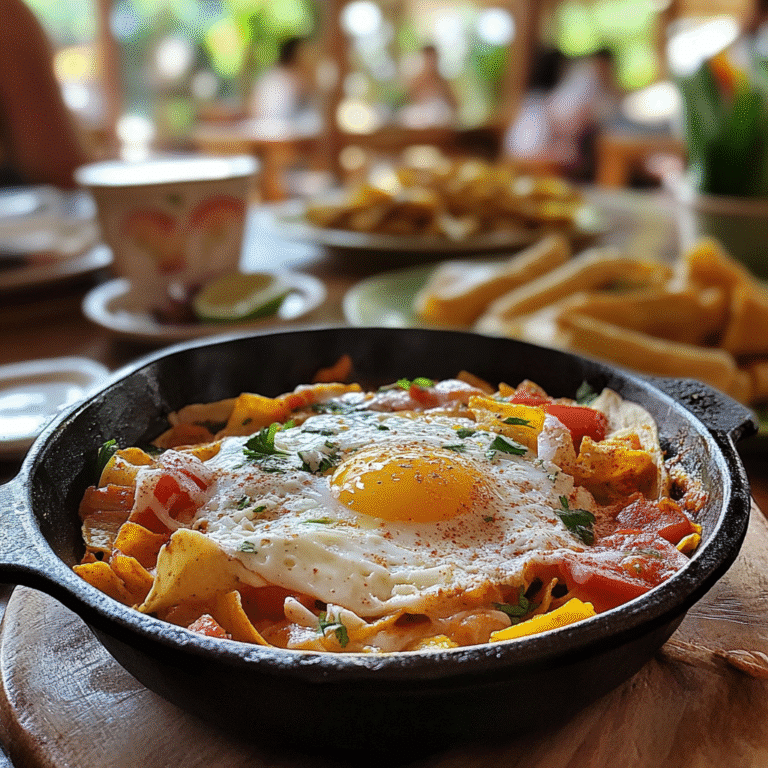If you’re looking to start your morning with something vibrant, hearty, and culturally rich, then traditional Mexican breakfast food is the way to go. From sizzling huevos rancheros to bold chilaquiles topped with fresh salsa, these dishes offer more than just a meal—they deliver an experience. Rooted in centuries of culinary heritage, Mexican breakfast traditions celebrate fresh ingredients, bold spices, and meaningful mealtime rituals.
Whether enjoyed on a bustling street corner or in a quiet rural village, Mexican morning meals reflect both indigenous roots and colonial influence. This guide explores the dishes, drinks, regional twists, and history that make traditional Mexican breakfast food truly unforgettable.
Don’t miss our guide to bold Mexican flavors like elote—perfect with your breakfast spread: Check out our Mexican elote recipe
Table of Contents
History and Cultural Importance of Traditional Mexican Breakfast
The Roots of Mexican Breakfast Traditions
In Mexico, breakfast—or desayuno—is more than just a way to fuel the body. It’s a cultural ritual, a moment that connects family, community, and tradition. The origins of traditional Mexican breakfast food trace back to ancient civilizations like the Mayans and Aztecs. Morning meals typically included corn tortillas, beans, and fresh fruits—simple yet nourishing.
The Spanish conquest brought new ingredients, such as eggs, pork, cheese, and wheat, which deeply influenced Mexican breakfast cuisine. This blend of native and European elements gave birth to many of the country’s most beloved breakfast dishes.
Today, from rural towns to urban cities, locals still gather each morning to enjoy authentic Mexican breakfast foods rooted in history and culture.
Print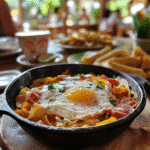
Traditional Mexican Breakfast Food: A Delicious Journey into Authentic Flavors
- Total Time: 40 minutes
- Yield: 4 servings
Description
Start your day with vibrant, hearty traditional Mexican breakfast food—where rich heritage meets bold flavors.
Ingredients
- Corn tortillas
- Refried beans (pinto or black)
- Eggs
- Queso fresco or cotija cheese
- Fresh tomatoes, onions, chilies
- Crema Mexicana
- Chorizo or shredded pork (optional)
- Salsa roja and salsa verde
- Avocado (optional)
Instructions
- Heat corn tortillas on a comal until soft or slightly crisped.
- Prepare refried beans by seasoning and reheating until creamy.
- Cook eggs to your preference—scrambled with tomatoes and chilies, or sunny-side up for dishes like huevos rancheros.
- Top tortillas with beans, eggs, and your choice of salsa.
- Sprinkle with crumbled queso fresco or cotija cheese.
- Add crema and avocado if desired.
- Serve with sides like tamales, molletes, or chilaquiles for variety.
- Enjoy with café de olla, atole, or fresh juice for a full experience.
Notes
Use fresh tortillas and homemade salsa for best results. Many ingredients are naturally gluten-free and can be adapted for vegetarian diets.
- Prep Time: 20 minutes
- Cook Time: 20 minutes
- Category: Breakfast
- Method: Stovetop
- Cuisine: Mexican
Indigenous Ingredients and Colonial Influences on Morning Meals
Core ingredients like corn, beans, and chili peppers have remained breakfast staples for centuries. Indigenous cooking methods like stone-grinding salsas or heating tortillas on a comal still define many traditional Mexican breakfasts. When colonists introduced new proteins and dairy products, the Mexican breakfast table expanded, creating fusion dishes still cherished today.
Below is a table showing how native and colonial ingredients shaped what we now call traditional Mexican breakfast food:
| Element | Indigenous Origin | Colonial Introduction |
|---|---|---|
| Base grains | Corn | Wheat |
| Protein | Beans | Eggs, Pork |
| Beverages | Atole, Cacao | Coffee, Milk |
| Cooking tools | Comal, Molcajete | Ovens, Metal pans |
| Sample dishes | Tamales, Tlacoyos | Molletes, Churros |
The modern-day Mexican breakfast menu stands as a testament to its multicultural past. This beautiful blend of flavors and traditions is what makes traditional Mexican breakfast food so unique and beloved around the world.
Looking for regional flavors like Yucatan-style breakfast meats? Discover Cochinita Pibil for mornings
Core Elements in a Traditional Mexican Breakfast
Staples in Traditional Mexican Breakfast Food: Tortillas, Beans, Eggs, and Cheese
Every great morning in Mexico begins with a satisfying plate built on the classic staples of traditional Mexican breakfast food. These base ingredients are more than just pantry items—they’re culinary cornerstones passed down through generations.
First up, corn tortillas are found at nearly every breakfast table. Whether fresh, toasted, or fried, tortillas serve as the flavorful foundation for iconic morning meals like chilaquiles, breakfast tacos, and huevos rancheros. You won’t find a more important element in Mexican morning food.
Right beside them are refried beans—usually pinto or black—mashed and seasoned to perfection. Beans are often served as a hearty side or spread across bread for molletes, a comforting open-faced breakfast dish that’s uniquely Mexican.
Eggs play a central role too, but not in a boring way. In traditional Mexican breakfasts, eggs are typically cooked with onions, peppers, and tomatoes, known as huevos a la Mexicana, or served sunny-side-up and drenched in sauce, like in huevos rancheros or huevos divorciados.
And let’s not forget cheese, especially queso fresco and cotija, which offer a creamy or salty finish to round out the dish.
This balanced combination of tortillas, beans, eggs, and cheese is the soul of traditional Mexican breakfast food, offering both flavor and nutrition in every bite.
Salsas and Toppings That Define the Mexican Breakfast Flavor
No authentic Mexican breakfast is complete without a generous topping of freshly made salsa. These sauces—spicy, smoky, tangy—are what elevate everyday ingredients into crave-worthy meals.
For instance, salsa roja (made with tomatoes and chilies) adds a warm heat to huevos rancheros, while salsa verde (made from tomatillos) brings a tangy zing to chilaquiles and tamales. Some households even prepare mole or salsa negra for special-occasion breakfasts.
Here’s a quick reference table showcasing common toppings in traditional Mexican breakfast food and their signature contributions:
| Topping | Flavor Profile | Common Breakfast Use |
|---|---|---|
| Salsa Verde | Tangy & fresh | Chilaquiles, enchiladas, tamales |
| Salsa Roja | Smoky & spicy | Huevos rancheros, tacos, molletes |
| Crema Mexicana | Cooling creaminess | Enfrijoladas, tacos de desayuno |
| Queso Fresco | Light & salty | Tostadas, molletes, chilaquiles |
| Pickled Onions | Bright & acidic | Cochinita pibil breakfast, tacos |
Each salsa or topping is carefully layered to match the dish’s ingredients, adding depth and personality. That’s the beauty of traditional Mexican breakfast food—simple components transformed by sauces and textures that speak to centuries of tradition.
Don’t miss our gluten-free take on these classics: Explore gluten-free Mexican breakfast food
Looking for regional flavor? Try tacos rojos potosinos for breakfast
Most Popular Traditional Mexican Breakfast Dishes
Chilaquiles: Crispy Tortilla Goodness in Salsa
One of the most iconic plates in traditional Mexican breakfast food is chilaquiles. This flavorful dish uses fried corn tortilla chips simmered in a bold salsa roja or salsa verde, then topped with crema, queso fresco, onions, and sometimes fried or scrambled eggs.
Chilaquiles are a staple in authentic Mexican breakfast dishes because they are comforting, customizable, and packed with flavor. Whether you enjoy them spicy or mild, crispy or soft, chilaquiles are a perfect representation of Mexican breakfast cuisine.
They’re typically served with refried beans, sliced avocado, or even shredded chicken for added protein, making them a complete and satisfying Mexican morning meal.
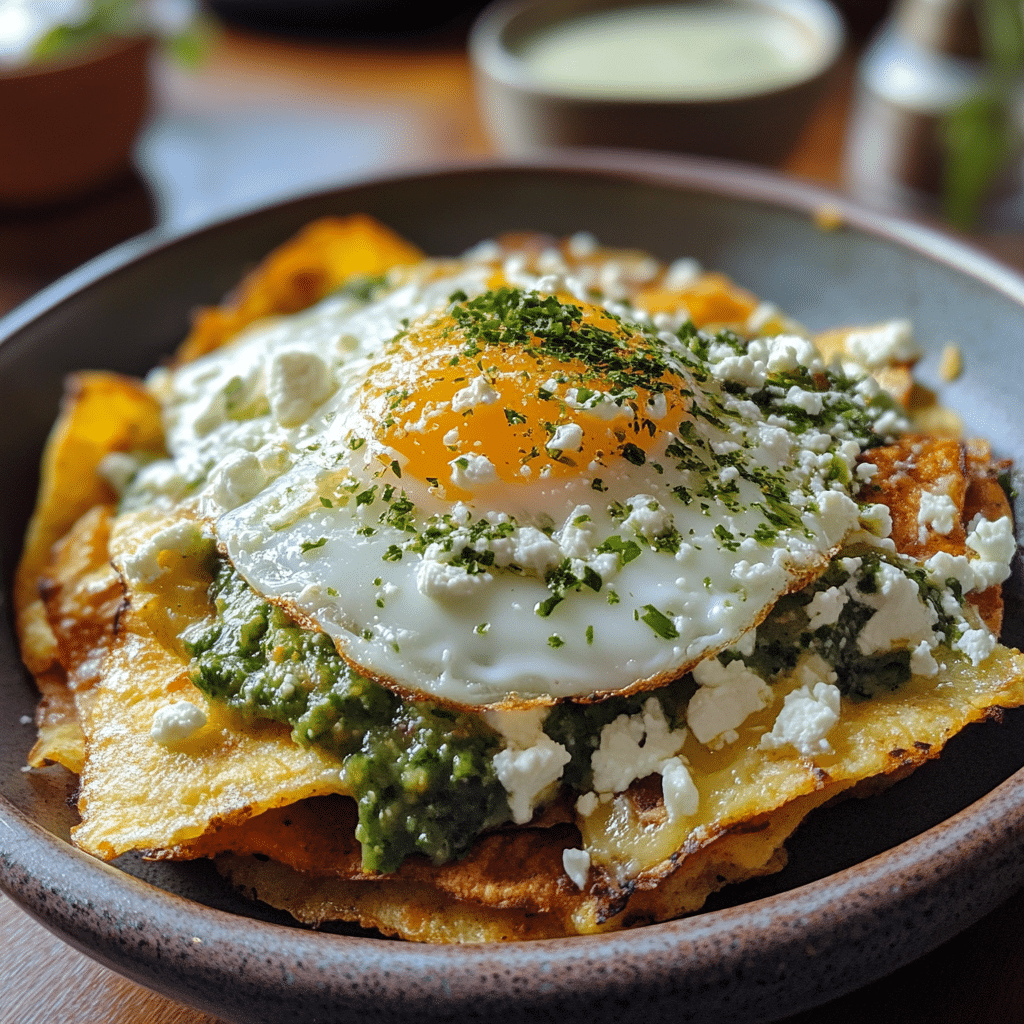
Huevos Rancheros: A Classic in Traditional Mexican Breakfast Food
Huevos rancheros, or “ranch-style eggs,” are a cornerstone of traditional Mexican breakfast food. This hearty plate features lightly fried corn tortillas topped with sunny-side-up eggs, all smothered in a savory tomato-chili sauce known as salsa ranchera.
What makes this dish stand out in Mexican breakfast cuisine is its simplicity, balance, and bold taste. It’s often finished with crema, crumbled queso fresco, and a sprinkle of cilantro, offering layers of texture and flavor.
Huevos rancheros aren’t just popular in rural areas—they’re served in restaurants and street stands all across Mexico, making them a universal favorite.
Looking for inspiration? Add shredded Cochinita Pibil to this dish: Try our Cochinita Pibil recipe
Tamales: The Hearty Pillar of Mexican Morning Meals
Though often linked to holidays, tamales are also a daily favorite in many regions of Mexico. As a key player in traditional Mexican breakfast food, tamales are made from masa harina filled with meats, cheeses, chilies, or sweet ingredients, then wrapped in corn husks and steamed.
You’ll find tamales sold early in the morning by street vendors, often paired with warm drinks like atole or champurrado. Their portability and rich, comforting taste make them a go-to choice for people rushing to start the day.
From spicy pork tamales to sweet pineapple ones, there’s a version of this authentic Mexican breakfast dish for everyone.
Molletes: A Simple Yet Satisfying Mexican Breakfast Bite
Molletes may not be as well-known internationally, but they’re a local favorite in traditional Mexican breakfast food. Made by slicing a bolillo roll in half, topping it with refried beans and cheese, then toasting it to golden perfection, molletes are quick, hearty, and delicious.
These Mexican breakfast sandwiches are often served with pico de gallo, avocado, or even crumbled chorizo for added flavor. Their simplicity and balance of textures make molletes a favorite for both busy mornings and casual brunches.
Discover more bean-based breakfast classics like this one: Try arroz con habichuelas guisadas
Regional Mexican Breakfast Variations
Northern vs. Southern Styles in Traditional Mexican Breakfast Food
One of the most fascinating aspects of traditional Mexican breakfast food is how it varies across regions. In the north of Mexico, breakfast often leans heavily on meats like machaca (dried, shredded beef), chorizo, and eggs. Tortillas in the north are often made with flour instead of corn, and dishes like breakfast burritos and huevos con chorizo are common.
In contrast, the southern regions—such as Oaxaca, Chiapas, and the Yucatán—favor vegetables, beans, and native herbs. These areas are known for deeply flavorful and complex dishes like tamales oaxaqueños, enfrijoladas, and chilequiles with mole negro. Corn remains dominant in the south, often used in masa-based breakfast dishes that reflect pre-Hispanic traditions.
This regional diversity is what makes traditional Mexican breakfast food so rich and dynamic. Whether you’re eating in Monterrey or Mérida, your plate tells a different story of Mexico’s culture and ingredients.
Unique Regional Specialties That Redefine Mexican Morning Meals
Beyond the basic staples, each state in Mexico has unique specialties that shine in the morning hours. In Yucatán, one of the standout dishes is Cochinita Pibil—slow-roasted pork marinated in achiote and citrus, often served with pickled onions and fresh tortillas. Though traditionally a lunch dish, it’s become a popular breakfast item in the region.
In San Luis Potosí, locals start their day with tacos rojos potosinos—corn tortillas dipped in a red chili sauce, stuffed with cheese or beans, and lightly fried. These tacos are paired with refried beans, crema, and cheese, making them a bold and satisfying start to the day.
In Oaxaca, breakfast often features black beans, plantains, and tlayudas, topped with eggs or quesillo (Oaxacan cheese). These rich, layered dishes are a celebration of local agriculture and indigenous culinary heritage.
Here’s a snapshot of regional specialties found in traditional Mexican breakfast food:
| Region | Signature Dish | Key Ingredients |
|---|---|---|
| North | Machaca con huevo | Dried beef, eggs, tortillas |
| Yucatán | Cochinita Pibil | Achiote pork, pickled onions |
| Oaxaca | Enfrijoladas | Black bean sauce, tortillas, cheese |
| San Luis Potosí | Tacos rojos | Chili-dipped tortillas, cheese |
| Chiapas | Tamales de chipilín | Masa, chipilín herb, banana leaves |
Each of these dishes reflects the cultural identity and available ingredients of its home region. From the meaty breakfasts of the north to the earthy, bean-based meals of the south, traditional Mexican breakfast food is as diverse as the country itself.
Don’t miss our full breakdown of regional tacos like the Potosino classic: Try tacos rojos potosinos
Traditional Mexican Brunch Explained
Brunch Culture in Mexico: A Late-Morning Celebration
While traditional Mexican breakfast food is usually served early, brunch—known locally as almuerzo—has become an important late-morning tradition, especially on weekends. It blends the hearty warmth of breakfast with the bold flavors of lunch, creating a flavorful crossover that appeals to families, social groups, and tourists alike.
In urban areas like Mexico City or Guadalajara, brunch is more formal and leisurely, often enjoyed in cafes or fondas with a spread of fresh juices, eggs, tortillas, and regional delicacies. In rural towns, brunch tends to be more rustic and practical—centered on leftovers or bulk-cooked dishes like pozole, tamales, or chile rellenos.
What sets Mexican brunch apart is the variety of textures and spice profiles—from crispy to soft, spicy to sweet. It’s a comfort-driven, community-centered experience.
If you’re exploring traditional Mexican breakfast food from a brunch angle, you’ll find the same classic ingredients—corn tortillas, beans, eggs, salsas—but in larger portions and often served with mezcal or fresh aguas frescas.
Popular Dishes Served During Traditional Mexican Brunch
A typical Mexican brunch menu is robust, and it includes many authentic breakfast dishes with a brunch twist. You’ll often find huevos divorciados, which features two eggs—one topped with salsa roja and the other with salsa verde—symbolizing culinary balance. Then there are enfrijoladas, where tortillas are rolled or folded in a rich black bean sauce and sprinkled with cheese.
You might also enjoy tacos de desayuno with chorizo, papas, or nopales, making brunch more than just an extension of breakfast—it becomes a feast. Street vendors and cafes alike elevate their morning menus to accommodate the Mexican brunch tradition, serving larger plates with a festive flair.
Below is a table of brunch-friendly traditional Mexican breakfast food options:
| Dish | Description | Perfect For |
|---|---|---|
| Huevos Divorciados | Two eggs with red & green salsa | Spicy and colorful brunch |
| Enfrijoladas | Tortillas in black bean sauce | Comfort and richness |
| Tacos de Desayuno | Filled with eggs, chorizo, nopales | Quick yet hearty |
| Tamales con Crema | Steamed masa with meat or cheese | Brunch centerpiece |
| Molletes Especiales | Beans, cheese, salsa, and meat on toast | Filling and customizable |
What ties these brunch dishes together is the soul of traditional Mexican breakfast food—simple ingredients elevated by heritage, freshness, and flavor.
Check out our gluten-free versions of these brunch favorites: Explore gluten-free Mexican food ideas
Don’t miss this sweet-meets-savory brunch idea using banana syrup: Try banana coffee syrup on molletes
Mexican Breakfast Drinks to Start the Day
Traditional beverages that complement traditional Mexican breakfast food
In Mexico, breakfast isn’t complete without a warm, comforting drink to go with your meal. From ancient chocolate-based recipes to cinnamon-spiced coffee, traditional beverages are a key part of the morning ritual. These drinks aren’t just about hydration—they represent centuries of cultural fusion and flavor.
A staple at nearly every breakfast table is café de olla, a cinnamon- and piloncillo-infused coffee that’s brewed in clay pots for a rustic, earthy flavor. It pairs perfectly with sweet bread or spicy eggs and adds an authentic touch to any traditional Mexican breakfast food spread.
Another classic is atole, a thick, hot beverage made from masa harina (corn flour), milk, and spices like vanilla or cinnamon. Atole has pre-Hispanic roots and remains a popular drink, especially during colder months or special occasions. Its cousin, champurrado, blends atole with chocolate, making it a rich, indulgent option often served with tamales.
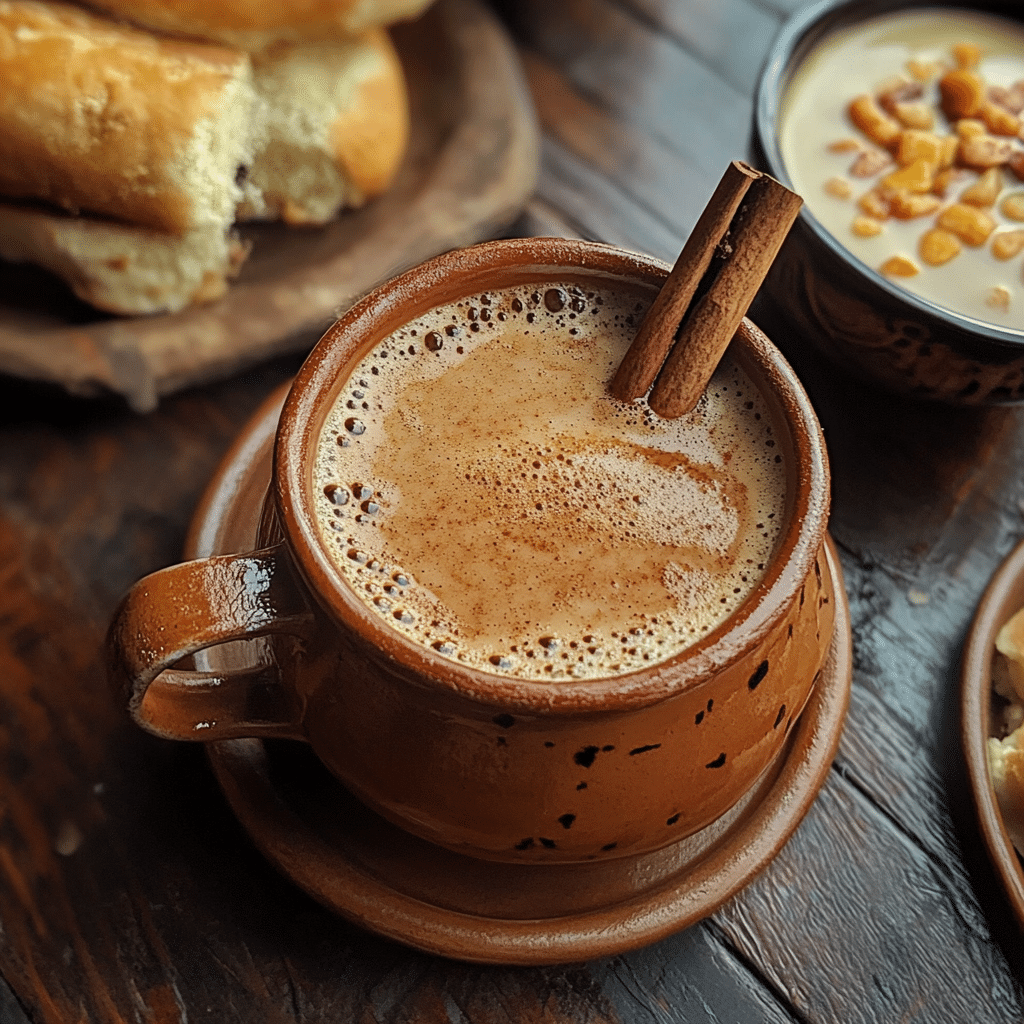
Fresh fruit juices are also a big part of breakfast in Mexico. Orange juice, papaya, guava, and beet-based blends are often made fresh and served alongside hearty dishes to brighten up the palate and aid digestion.
These drinks not only enhance flavor but also reflect the diversity and depth of traditional Mexican breakfast food traditions.
Regional breakfast drinks and modern twists on tradition
Each region in Mexico brings its own flair to the morning beverage menu. In southern regions like Oaxaca and Chiapas, hot chocolate made with roasted cacao and whipped with a wooden molinillo is a cherished breakfast staple. It’s served frothy and sometimes spiced, making it both delicious and ceremonial.
In the Yucatán Peninsula, sour orange juice or lime-infused teas may be more common, providing a refreshing balance to richer breakfast items like cochinita pibil. Meanwhile, in urban areas, smoothies made from tropical fruits and chia seeds have become trendy, offering a health-conscious spin on morning refreshment.
There’s also a modern shift in many Mexican homes where coffee culture has expanded. Cold brews, espresso shots, and specialty lattes now appear on breakfast tables, especially in metropolitan cities like Mexico City and Monterrey.
Still, these new trends often blend seamlessly with older traditions, allowing for a diverse and flexible approach to enjoying traditional Mexican breakfast food—whether you’re sipping a classic champurrado or a cold-pressed juice.
Here’s a comparison of traditional and modern Mexican breakfast drinks:
| Drink | Type | Common Pairing | Region |
|---|---|---|---|
| Café de olla | Spiced coffee | Pan dulce, eggs | Central Mexico |
| Atole | Corn-based hot drink | Tamales | Nationwide |
| Champurrado | Chocolate + atole | Sweet tamales, empanadas | Central & South |
| Fresh juice | Fruit blend | Chilaquiles, molletes | All regions |
| Hot chocolate | Roasted cacao drink | Bread, tamales | Oaxaca, Chiapas |
| Smoothies | Fruit + seeds | Light breakfast items | Urban areas |
Looking for a breakfast dish that pairs beautifully with traditional Mexican drinks? Try our comforting gluten-free recipes: Check out gluten-free Mexican options
Modern Takes on Traditional Mexican Breakfasts
Fusion recipes blending tradition with innovation
While traditional Mexican breakfast food is rooted in history, the modern culinary scene has embraced innovation without losing its cultural soul. Across Mexico and in Mexican-American kitchens, chefs and home cooks alike are blending age-old recipes with contemporary ingredients and techniques to create exciting new breakfast experiences.
One example is the breakfast burrito, which, though originally popularized in the U.S., now features distinctly Mexican fillings like chorizo, nopales, queso Oaxaca, and salsa verde. These burritos combine portability with bold flavors, making them a hit among younger generations.
Avocado toast has also made its way into Mexican homes, often topped with traditional elements like cotija cheese, chile flakes, and lime. Likewise, molletes have received modern upgrades, such as vegan cheese alternatives, gluten-free bread, and plant-based bean pastes, expanding the appeal of traditional Mexican breakfast food to health-conscious and vegetarian audiences.
Even smoothies and grain bowls are being reimagined with Mexican flair. A modern breakfast bowl might feature quinoa, roasted sweet potatoes, black beans, avocado, and a spicy chipotle dressing—pulling from Mexican ingredients but aligning with today’s global health trends.
These fusion creations maintain the spirit of authenticity while inviting creativity, proving that traditional Mexican breakfast food can evolve with time.
Health-conscious options and gluten-free alternatives
As awareness around nutrition, allergies, and wellness grows, many Mexican households have begun adapting breakfast recipes to meet modern dietary needs. Gluten-free, dairy-free, and low-carb versions of classic dishes are now easier than ever to find—or make at home.
For example, corn tortillas are naturally gluten-free, which makes them a perfect base for traditional dishes without modification. Tamales, too, can be made gluten-free when prepared with pure masa harina and wrapped in corn husks or banana leaves.
Chilaquiles and enfrijoladas can be transformed into lighter meals by baking the tortillas instead of frying them, using low-fat cheeses, or replacing crema with Greek yogurt. These adjustments allow for healthier versions of beloved dishes while staying true to the essence of traditional Mexican breakfast food.
Smoothies made with tropical fruits like mango, guava, and papaya—often blended with chia seeds or almond milk—are now common in modern Mexican kitchens. They offer a nutrient-dense complement to a lighter breakfast or serve as a standalone morning meal.
For those looking to reduce meat intake, plant-based versions of classic dishes like huevos rancheros with tofu scramble or molletes with refried lentils are becoming increasingly popular. These changes allow more people to enjoy the cultural richness of traditional Mexican breakfast food without compromising on health goals.
Where to Try Authentic Mexican Breakfast
Street food vendors and breakfast spots
To truly experience traditional Mexican breakfast food, start with the streets. Across Mexico, vendors set up early, serving tamales, tacos, chilaquiles, and café de olla straight from bubbling pots and sizzling griddles. These spots are not only affordable but also offer bold, authentic flavors passed down through generations.
Markets and food stalls are especially known for their fresh tortillas and handmade salsas, making every bite a taste of culture.
Homemade meals and fondas
For a more intimate setting, home-cooked meals and family-run fondas offer a different side of traditional Mexican breakfast food. These places serve dishes like molletes, huevos rancheros, and fresh beans—often made with locally sourced ingredients. Sit-down breakfast restaurants may also offer gourmet twists on classics like chilaquiles or tamales.
Cooking a Traditional Mexican Breakfast at Home
Essential tools and pantry ingredients
Making traditional Mexican breakfast food at home is not only satisfying but also more accessible than you might think. It starts with a few must-have tools and staple ingredients that capture the flavors and textures of authentic Mexican cuisine.
The most essential tool is a comal, a flat griddle used to heat tortillas and roast chilies. A molcajete, the traditional stone mortar and pestle, is perfect for grinding fresh salsa. Other helpful items include a tortilla press, a clay pot for café de olla, and a large frying pan for eggs and beans.
Pantry ingredients to keep on hand include:
- Corn tortillas (preferably fresh or homemade)
- Masa harina (for tamales, atole, or gorditas)
- Refried beans (or whole black/pinto beans)
- Queso fresco or cotija cheese
- Chilies (guajillo, arbol, jalapeño)
- Tomatoes, onions, garlic
- Spices like cumin, cinnamon, and Mexican oregano
With these basics, you’re ready to make a variety of classic dishes and drinks that define traditional Mexican breakfast food.
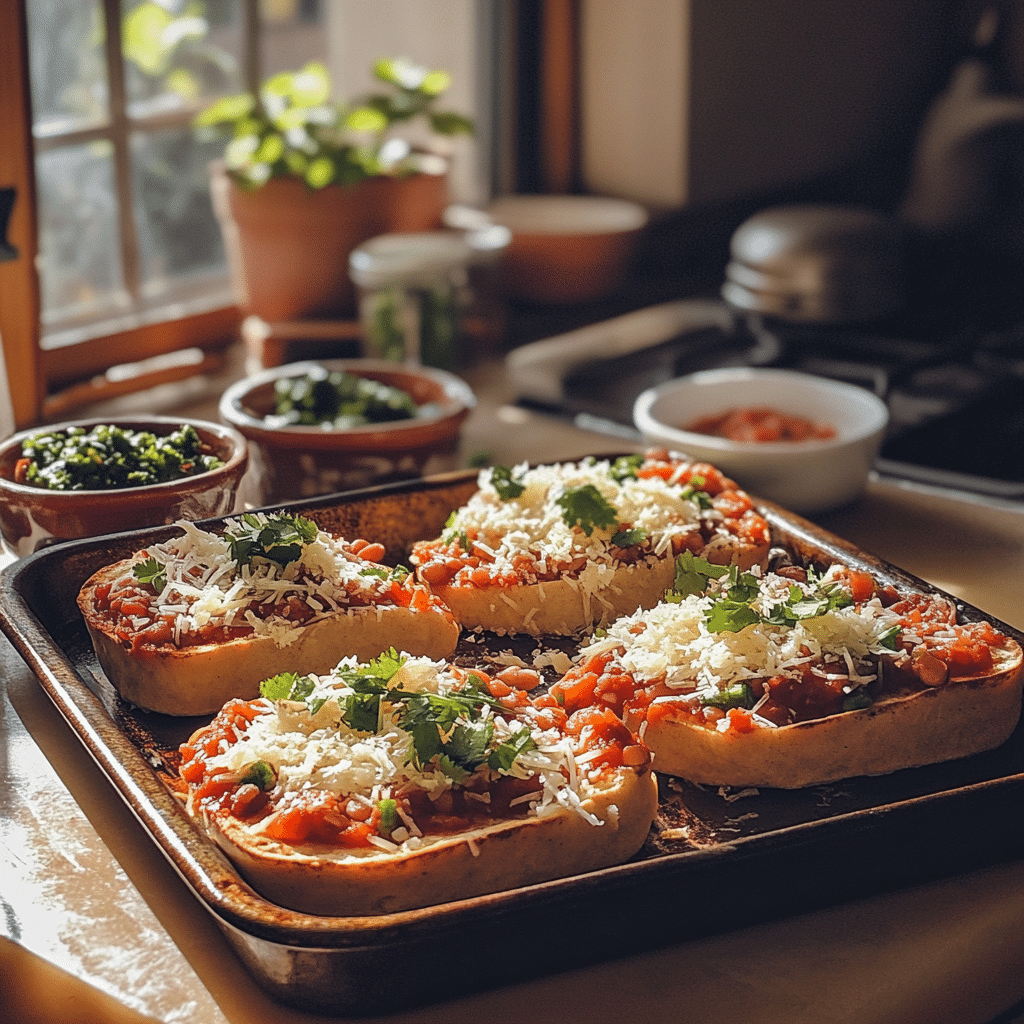
Step-by-step beginner recipes to try
If you’re just starting out, there are a few go-to dishes that offer an easy and rewarding entry into Mexican breakfast cooking.
Chilaquiles – Cut and lightly fry corn tortillas, simmer them in red or green salsa, and top with crema, cheese, and optional fried eggs. Serve with beans for a complete meal.
Molletes – Slice bolillo rolls in half, spread with refried beans, top with cheese, and broil until melted. Add salsa or avocado slices for extra flavor.
Huevos rancheros – Fry tortillas and eggs separately, then combine and top with a warm salsa made from tomatoes, onions, and chilies. A side of black beans makes it traditional and hearty.
Tamales – Mix masa with lard or oil, fill with meats or cheese, wrap in corn husks, and steam. It’s a weekend project, but one that pays off with incredible, authentic flavor.
These recipes reflect the essence of traditional Mexican breakfast food—comforting, flavorful, and rooted in culture.
Conclusion: The Flavor and Heart of Traditional Mexican Breakfast Food
Traditional Mexican breakfast food is more than just a morning meal—it’s a celebration of flavor, culture, and community. From simple street tacos to rich tamales and café de olla, each dish tells a story of Mexico’s vibrant culinary heritage.
Whether you’re exploring recipes at home or tasting them abroad, these breakfasts offer comfort, tradition, and bold taste in every bite.
FAQ: Traditional Mexican Breakfast Food
What are typical Mexican breakfasts?
Typical Mexican breakfasts include hearty, flavorful dishes made with ingredients like tortillas, beans, eggs, cheese, and salsa. Some of the most common meals are chilaquiles, huevos rancheros, tamales, molletes, and enfrijoladas. These dishes are often served with sides like refried beans, avocados, and fresh juices, making traditional Mexican breakfast food both satisfying and well-balanced.
What do Mexicans eat in the morning?
Mexicans usually enjoy a desayuno (light breakfast) early in the morning, often including pan dulce (sweet bread), café de olla, or atole. A second breakfast or almuerzo is more filling and includes eggs with salsa, tamales, or tacos de desayuno. Whether light or hearty, Mexican morning meals are always rich in flavor and deeply rooted in tradition.
What does a Mexican brunch consist of?
A Mexican brunch blends elements of breakfast and lunch and is especially popular on weekends. It usually features larger portions of classic dishes like huevos divorciados, chilaquiles with meat, or tamales served with atole or champurrado. Traditional Mexican breakfast food plays a central role, with brunch often becoming a social, family-focused meal.
What is the Mexican breakfast called?
In Spanish, breakfast is called desayuno. A mid-morning or second breakfast is often referred to as almuerzo. Together, these meals form the core of traditional Mexican breakfast food, with desayuno typically being lighter and almuerzo more substantial. Each reflects the cultural and regional diversity of Mexico’s culinary traditions.

